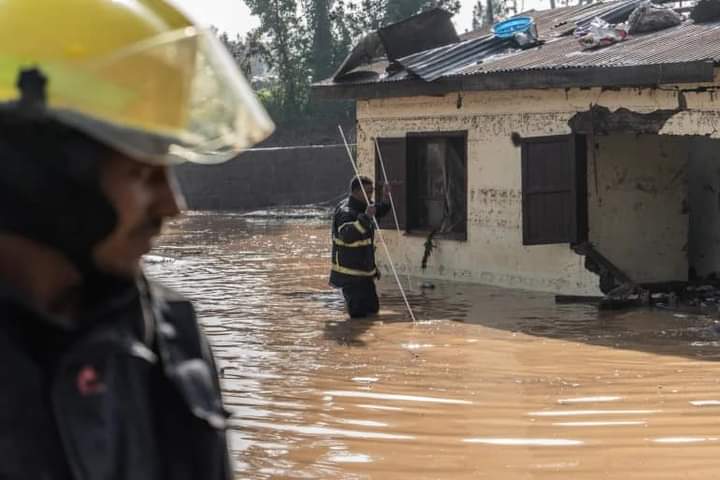The Amhara Disaster Prevention and Food Security Commission has raised the alarm, indicating that up to 400,000 people across eight zones and 34 districts in the region are at significant risk of natural disasters during the ongoing rainy season. As heavy rains persist, the region is grappling with the devastating consequences of floods, landslides, and other weather-related calamities.
Commissioner Tesfaw Batable, in a recent interview with state media, disclosed that several areas, including North Gondar, South Gondar, and Wag Hemra zones, have already experienced severe damage due to the relentless downpour.
The situation is particularly dire in the Tselemti district of the North Western Tigray zone, where a catastrophic landslide recently claimed the lives of ten individuals and forced 2,949 others to flee their homes.
In response to the unfolding disaster, the Amhara regional government has swiftly mobilized resources to aid the affected populations.
Commissioner Tesfaw revealed that 45,000 quintals of emergency aid have been allocated to provide immediate relief to the displaced residents of Tselemti. Authorities in the district have already begun distributing daily meals to those who have lost their homes and livelihoods.
The crisis is further compounded by the forecast of continued heavy rainfall until September 10, as predicted by the National Meteorology Agency.
Despite the preventive measures undertaken by the Amhara Disaster Prevention and Food Security Commission, including the construction of flood prevention dams in 21 districts at a cost of 94.7 million birr, the risk of further displacement looms large.
Commissioner Tesfaw expressed concerns that, despite these efforts, an estimated 28,000 people may still be forced to leave their homes as the rains continue to batter the region.
He stressed that the government is working in close coordination with both governmental and non-governmental organizations to ensure that those affected receive the necessary support.
In light of the escalating situation, Tesfaw issued an urgent plea to residents in high-risk areas, particularly those living around Lake Tana, to relocate to safer grounds immediately.
The call for relocation is a precautionary measure aimed at minimizing the potential loss of life and property as the region braces for more adverse weather conditions.
The ongoing disaster highlights the vulnerability of the Amhara region to extreme weather events, a situation exacerbated by climate change and environmental degradation.
The government’s proactive measures, while critical, underscore the broader need for sustainable disaster preparedness and resilience-building efforts to safeguard communities from future calamities.
As the rains continue, the people of Amhara face an uncertain future, with the hope that the swift response and coordinated efforts will mitigate the impact of this year’s rainy season.
The situation remains fluid, with authorities and relief organizations on high alert, ready to respond to any further emergencies that may arise in the coming weeks.




